 First edition | |
| Author | John Updike |
|---|---|
| Language | English |
| Publisher | Knopf |
Publication date | 1968 |
| Publication place | United States |
| Pages | 458 |
| ISBN | 978-0006812999 |
| LC Class | PZ4.U64 Co3 |
Couples is a 1968 novel by American author John Updike.
 First edition | |
| Author | John Updike |
|---|---|
| Language | English |
| Publisher | Knopf |
Publication date | 1968 |
| Publication place | United States |
| Pages | 458 |
| ISBN | 978-0006812999 |
| LC Class | PZ4.U64 Co3 |
Couples is a 1968 novel by American author John Updike.
The novel depicts the lives of a promiscuous circle of ten couples in the small Massachusetts town of Tarbox. (When he composed the book, the author was living in Ipswich, Massachusetts.)
Much of the plot of Couples (which opens on the evening of March 24, 1962, and integrates historical events like the loss of the USS Thresher on April 10, 1963, the Profumo affair, and the Kennedy assassination in November 1963) concerns the efforts of its characters to balance the pressures of Protestant sexual mores against increasingly flexible American attitudes toward sex in the 1960s.[ citation needed ] The book suggests that this relaxation may have been driven by the development of birth control and the opportunity to enjoy what one character refers to as "the post-pill paradise".[ citation needed ]
The novel is rich in period detail. (In 2009, USA Today called it a "time capsule" of the era.) [1] The lyrical and explicit descriptions of sex, unusual for the time, made the book somewhat notorious.[ citation needed ] Time had reserved a cover story for Updike and the novel before knowing what it was about; after actually reading it they were embarrassed, and discovered that "the higher up it went in the Time hierarchy, the less they liked it." [2]
The ten couples are:
At the center of the amorous round robin is Piet Hanema. His first affair is with Georgene, but he leaves her for pregnant Foxy. At the same time the "Little-Smiths" swap partners with the Appleby couple. Harold and Janet keep their affair secret, while they know about the affair of Frankie and Marcia. After Foxy gives birth to her son, Piet loses interest and has a fling with Bea Guerin. Foxy informs Piet that she has become pregnant again as the result of their final liaison. They try to arrange a discreet abortion and seek help from Freddy. He offers aid but, as revenge for Piet's affair with his wife Georgene, demands a night with Piet's wife Angela in return. Angela consents, but Freddy turns out to be impotent, at least for the act itself. On the verge of the abortion in Boston, Foxy breaks down with second thoughts about losing the baby.
Angela wants to leave Piet and suggests he should marry Foxy, who has separated from Ken. Piet temporarily finds comfort but no satisfaction in the arms of Bea Guerin. Eventually Angela tells Piet to leave her house, and for a period he lives on his own, having become a pariah among the couples of Tarbox. His partner Gallagher suggests a separation too and pays him off. In a final scene Piet and the society of Tarbox witness a fire that destroys the local church. The following years are summarized in a short final passage: Angela took a job as teacher and got a divorce, shortly after Piet married Foxy and they moved to Lexington, where they found new friends.
The novel was widely and enthusiastically reviewed,[ citation needed ] landing Updike on the cover of Time magazine, a rare location for an author. Time, while detailing similarities between real Ipswich and fictional Tarbox, called the book "sensational". [3] Critic and novelist Wilfred Sheed, in the New York Times Book Review , found Couples "ingenious" and "scorching...the games are described with loving horror." Addressing the novel's famous frankness about sexual manners, Sheed wrote, "If this is a dirty book, I don't see how sex can be written about at all. Updike's treatment of sex is central to his method, which is that of a fictional biochemist approaching mankind with a tray of hypersensitive gadgets." [4] More recently, Martin Amis dismissed Couples as one of the author's lesser works. [5] Writing in the Los Angeles Review of Books in 2016, Meghan O’Gieblyn explored the book's implications in light of feminist perspectives. [6]
Couples is often cited as a historically important depiction of the sexual revolution of the 1960s, along with Philip Roth's Portnoy's Complaint (1969) and Gore Vidal's Myra Breckinridge (1968). In 1993, Edward Sorel illustrated the authors as a trio of satyrs. [7] [8]
Updike had intended to call the novel, "in honor of its amplitude", Couples and Houses and Days. [9] To an interviewer's question about the difficulty of writing scenes about sex, Updike replied: "They were no harder than landscapes and a little more interesting. It's wonderful the way people in bed talk, the sense of voices and the sense of warmth, so that as a writer you become kind of warm also. The book is, of course, not about sex as such: It's about sex as the emergent religion, as the only thing left." [10] And in the Paris Review "Art of Fiction" interview series, he discussed the disappearance of his novel's hero into the story's happy ending: [11]
There's also a way, though, I should say, in which, with the destruction of the church, with the removal of Piet's guilt, he becomes insignificant. He becomes merely a name in the last paragraph: he becomes a satisfied person and in a sense dies. In other words, a person who has what he wants, a satisfied person, a content person, ceases to be a person. Unfallen Adam is an ape. Yes, I guess I do feel that. I feel that to be a person is to be in a situation of tension, is to be in a dialectical situation. A truly adjusted person is not a person at all—just an animal with clothes on or a statistic. So that it's a happy ending, with this 'but' at the end.

John Hoyer Updike was an American novelist, poet, short-story writer, art critic, and literary critic. One of only four writers to win the Pulitzer Prize for Fiction more than once, Updike published more than twenty novels, more than a dozen short-story collections, as well as poetry, art and literary criticism and children's books during his career.
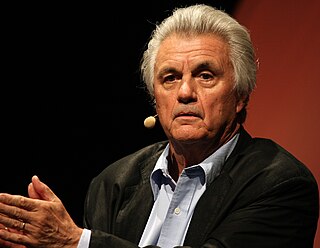
John Winslow Irving is an American-Canadian novelist, short story writer, and screenwriter.

Operation Shylock: A Confession is a 1993 novel by American novelist Philip Roth.
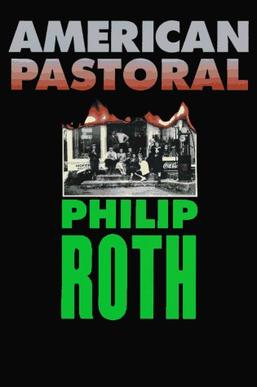
American Pastoral is a Philip Roth novel published in 1997 concerning Seymour "Swede" Levov, a successful Jewish American businessman and former high school star athlete from Newark, New Jersey. Levov's happy and conventional upper middle class life is ruined by the domestic social and political turmoil of the 1960s during the presidency of Lyndon B. Johnson, which in the novel is described as a manifestation of the "indigenous American berserk". It is the first in Roth's American Trilogy, followed by I Married a Communist (1998) and The Human Stain (2000).

The Witches of Eastwick is a 1984 novel by American writer John Updike. A sequel, The Widows of Eastwick, was published in 2008.

Memories of My Melancholy Whores is a novella by Gabriel García Márquez. The book was originally published in Spanish in 2004, with an English translation by Edith Grossman published in October 2005.

Kafka on the Shore is a 2002 novel by Japanese author Haruki Murakami. Its 2005 English translation was among "The 10 Best Books of 2005" from The New York Times and received the World Fantasy Award for 2006. The book tells the stories of the young Kafka Tamura, a bookish 15-year-old boy who runs away from his Oedipal curse, and Satoru Nakata, an old, disabled man with the uncanny ability to talk to cats. The book incorporates themes of music as a communicative conduit, metaphysics, dreams, fate, and the subconscious.
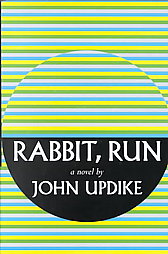
Rabbit, Run is a 1960 novel by John Updike. The novel depicts three months in the life of a 26-year-old former high school basketball player named Harry "Rabbit" Angstrom, who is trapped in a loveless marriage and a boring sales job, and attempts to escape the constraints of his life. It spawned several sequels, including Rabbit Redux, Rabbit is Rich and Rabbit at Rest, as well as a related 2001 novella, Rabbit Remembered. In these novels, Updike takes a comical and retrospective look at the relentless questing life of Rabbit against the background of the major events of the latter half of the 20th century.
Dinner at the Homesick Restaurant is a 1982 novel by Anne Tyler, set in Baltimore, Maryland. It is Tyler's ninth novel. In 1983 it was a finalist for the Pulitzer Prize, the National Book Award, and the PEN/Faulkner Award. Tyler considers it her best work.
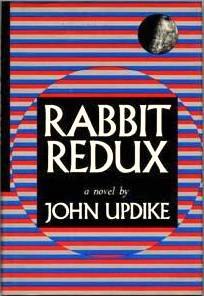
Rabbit Redux is a 1971 novel by John Updike. It is the second book in his "Rabbit" series, beginning with Rabbit, Run and followed by Rabbit Is Rich, Rabbit At Rest, published from 1960 to 1990, and the related 2001 novella, Rabbit Remembered.
In the Beauty of the Lilies is a 1996 novel by John Updike. It takes its title from a line of the abolitionist song "The Battle Hymn of the Republic." The novel received the 1997 Ambassador Book Award for Fiction.
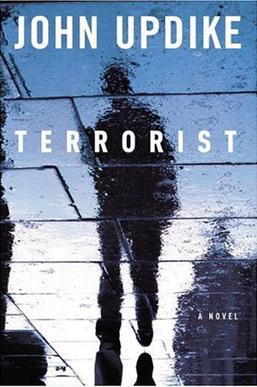
Terrorist is a novel by American writer John Updike, published in 2006. It is the author's 15th standalone novel.
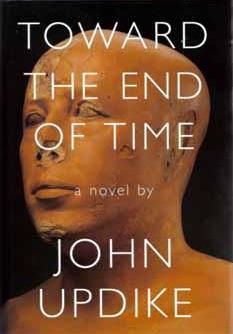
Toward the End of Time is a novel by American writer John Updike, published in 1997. It is the author's 18th novel.
Roger's Version is a 1986 novel by American writer John Updike.

Auguste Corteau is the pen name of the Greek author Petros Hadjopoulos.

The Early Stories: 1953–1975, published in 2003 by Knopf, is a John Updike book collecting much of his short stories written from the beginning of his writing career, when he was just 21, until 1975. Only four stories published in this entire time period have been omitted from this collection by John Updike himself: "Intercession", and "The Pro", "One of My Generation", and "God Speaks". The majority of the stories were originally published in The New Yorker magazine. In 2004, the book received the PEN/Faulkner Award for Fiction.

Fish Hooks is an American animated television series created by Noah Z. Jones and developed by Alex Hirsch and William Reiss for Disney Channel. The show ran for three seasons from September 3, 2010, to April 4, 2014, airing a total of 59 episodes.
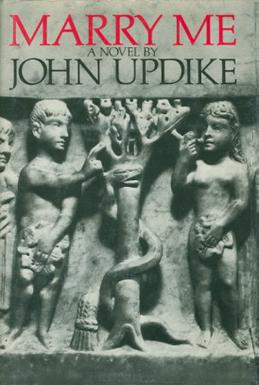
Marry Me: A Romance is a 1976 novel by American writer John Updike.

Georgene Hoffman Seward, an early feminist psychologist, was best known for her research on sex roles and sex behavior. Having experienced much sex discrimination in academia herself, she dedicated her life to researching sex differences and minority experiences, and encouraging women to pursue leadership in science.
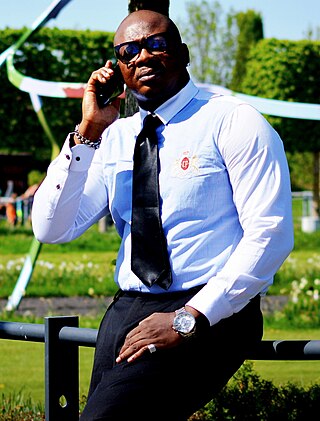
Wilfred Kanu Jr., known by his stage name Freddy Will, is a Sierra Leonean American author, music producer, publisher, recording artist, and philanthropist best known for releasing three consecutive albums with accompanying books. He launched his music career by mixing hip-hop with jazz, calypso, r&b, classical music, and Afrobeat. He writes books on history, philosophy, biography, poetry, personal development, and fiction. He is best known for his singles "City Boy" (2008), "Providence feat. Carvin Winans" (2009), "Endurance" (2010), "Mandingo Love" (2012), "2 Passports" (2014), "Livin' N' Toronto feat. Kao Denero" (2014), "Girl from Happy Hill" (2017), "IV U feat. King Boss LAJ" (2020) and "Natural Light" (2024). He has also written several books in Europe.